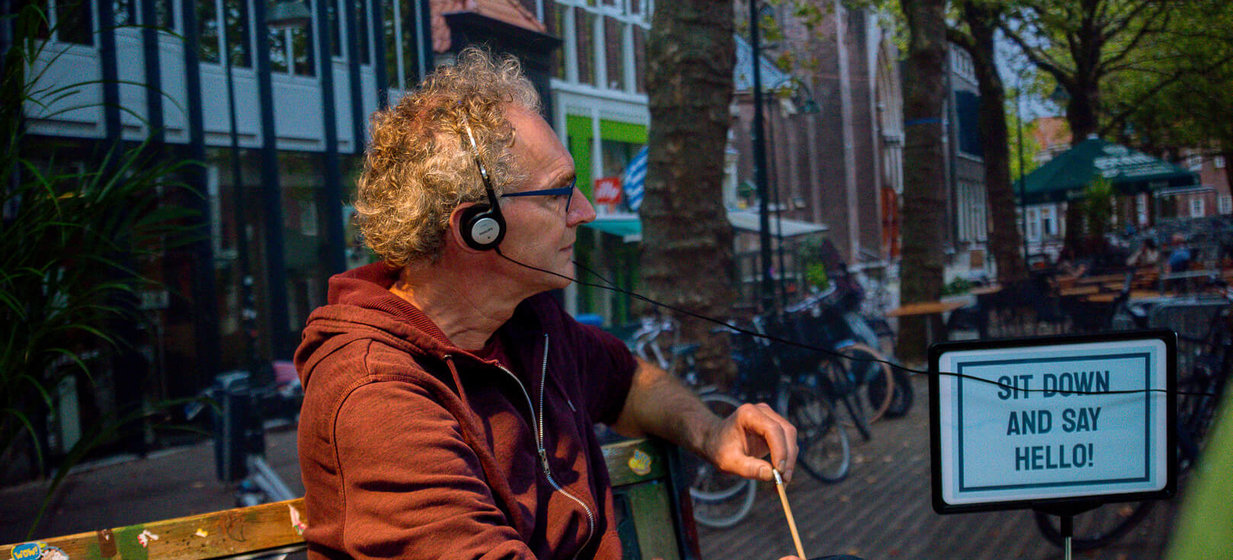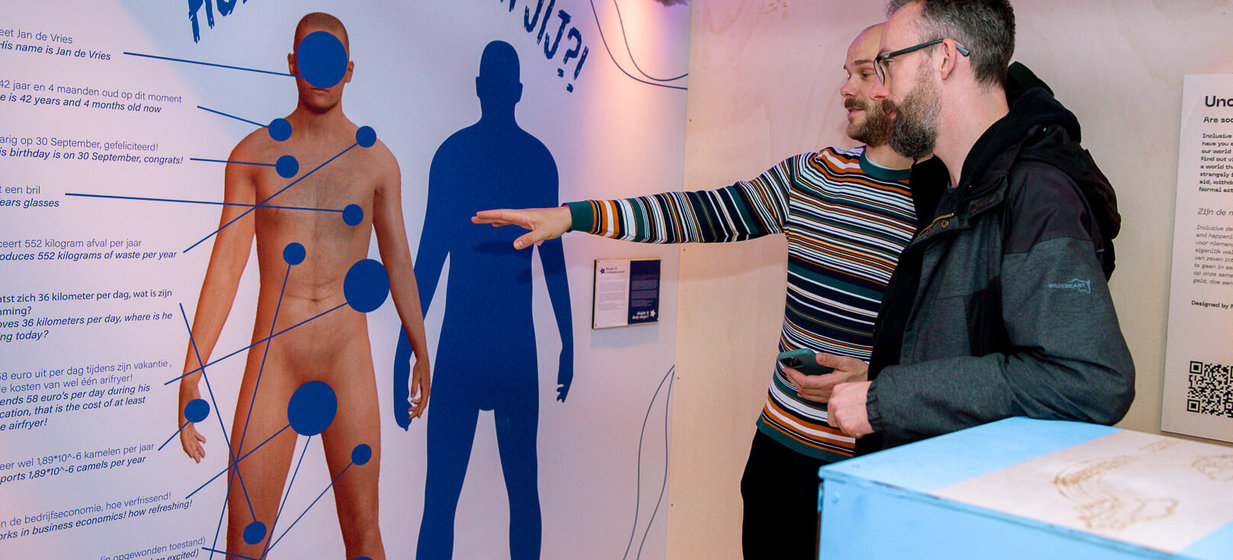
At the end of October an IDE dream came true. After many months of preparation, the faculty’s first standalone exhibition at Dutch Design Week opened its doors to the public. Didn’t get the chance to visit? Read on for highlights from the nine days.
The Boiler Room of Design
IDE made its Dutch Design Week debut on the Ketelhuisplein (literally translated as the Boiler Room Square), best described as the beating heart of the nine-day design festival. A stone’s throw from the Philip’s Klokgebouw and flanked by a skate park on one side and a bar on the other, the area was buzzing with design aficionados, day trippers, colleagues on business trips, and groups of high school students. Passers-by were drawn towards the bright yellow door of IDE’s Dream.Discover.Design. exhibition, where curator Wing Yan Man stood - come rain or shine - offering a warm welcome.


Over the course of nine days some 16,000 visitors were lured into what affectionately became known as the “design dungeon”. And by the final weekend, word had gotten out about our exhibition: queues of people lined up across Ketelhuisplein eager to see what was beyond the yellow doors.
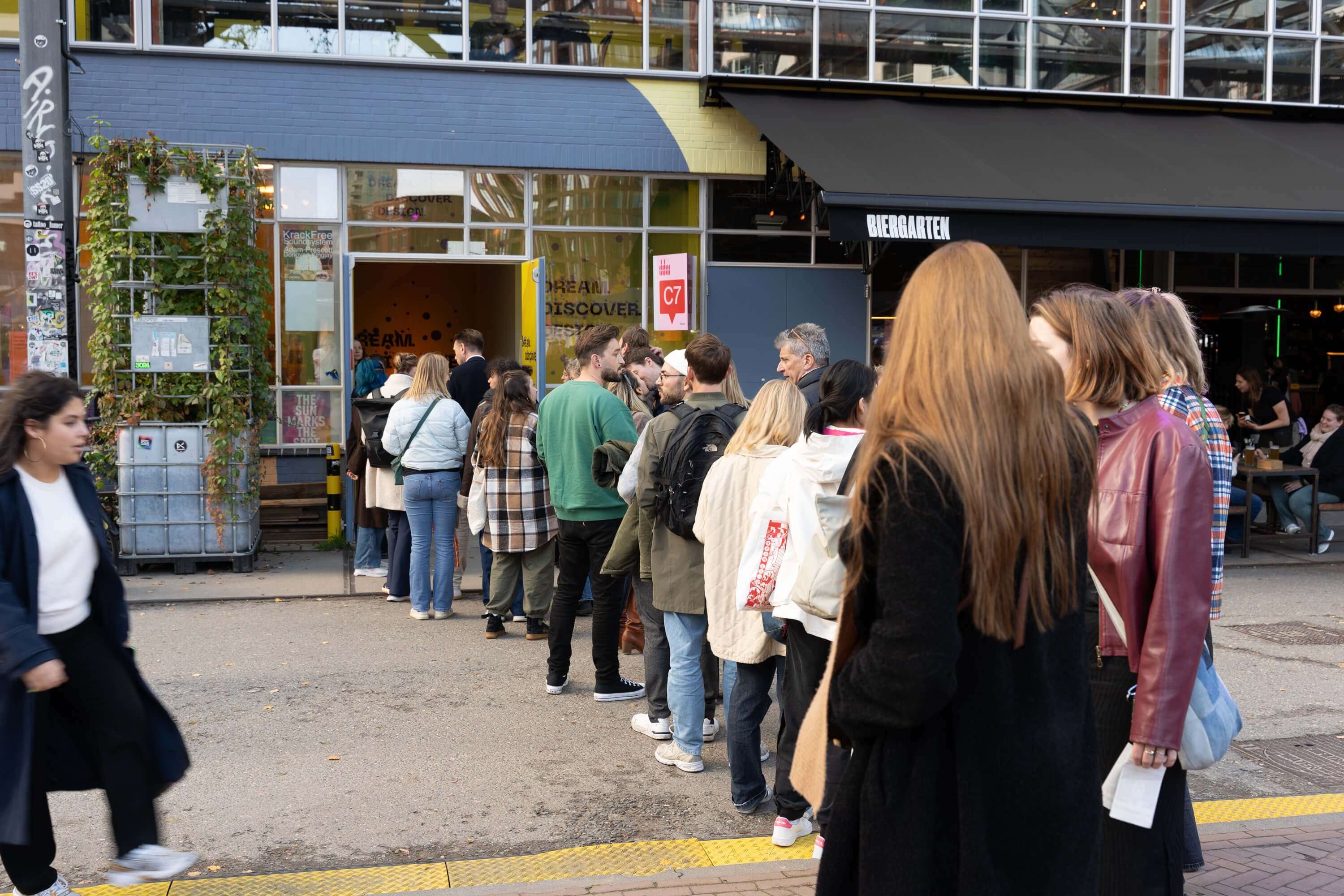

Descent into the Dream World of Design
Dream.Discover.Design. turned out to be worth the wait. Designed in three distinct parts, it was not so much an exhibition but an experience. Stepping beyond the bright yellow doors, visitors entered the Dream phase. Descending a flight of concrete stairs to a long corridor, a student assistant handed out white parcel tags and pencils, inviting visitors to write down their own dream for the future before attaching it to the metal grid which ran along the corridor.
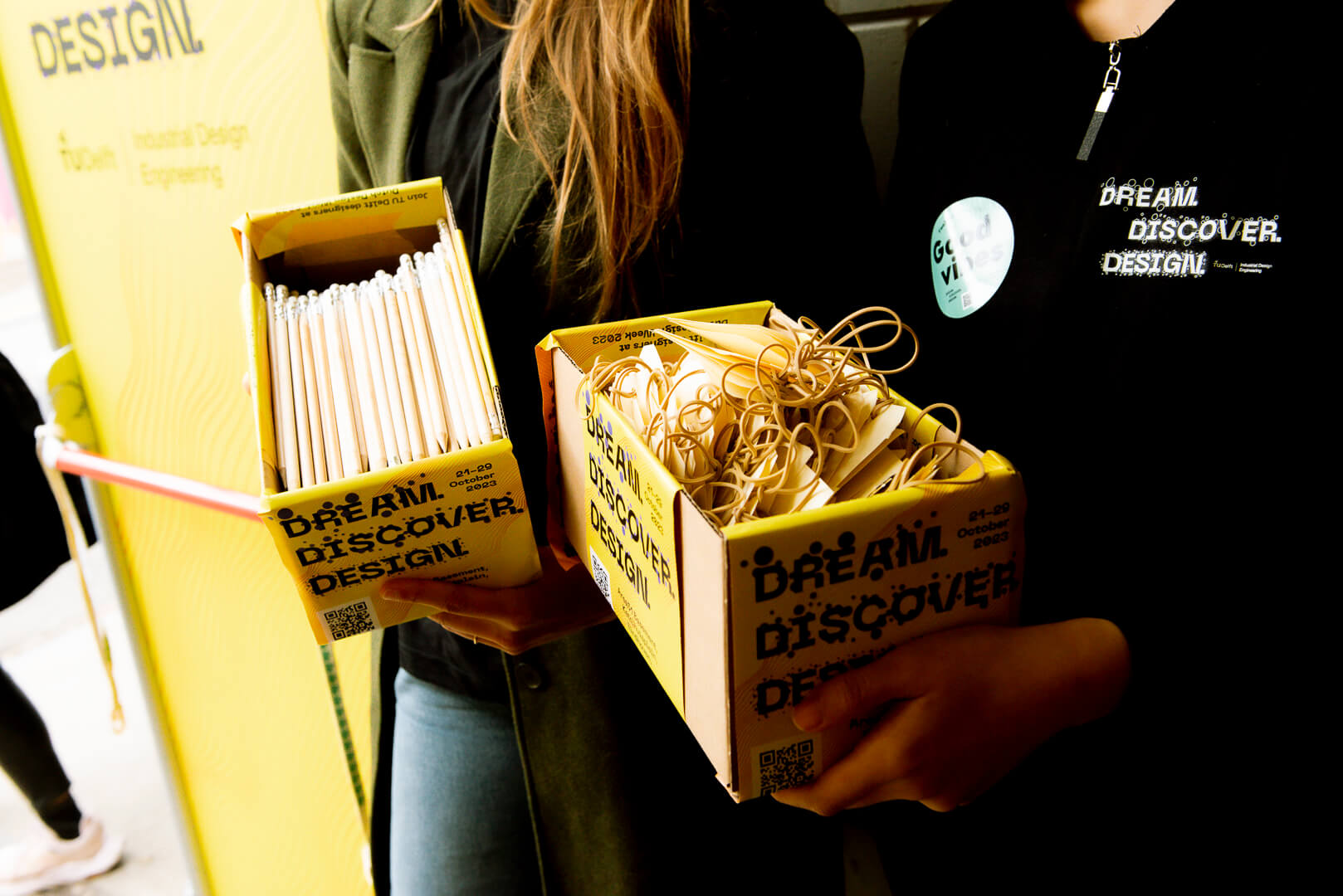
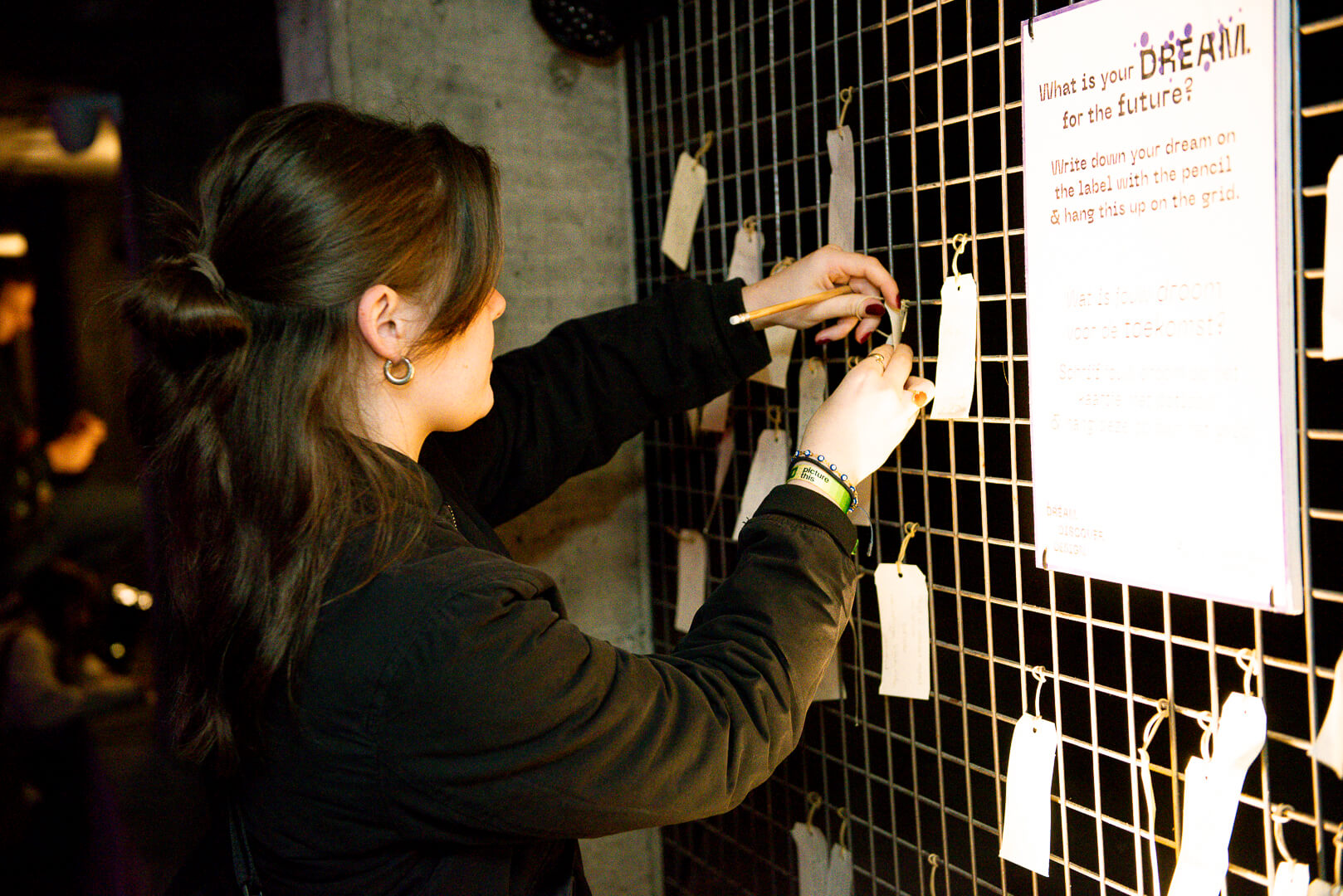

After nine days and so many visitors, the visual impact of thousands of dreams assembled in one space was moving. It was also seen as a potentially interesting source of data for a faculty whose motto is “design for the future”. There are already some promising ideas about how this information might be mapped.
Having traversed the corridor of dreams, visitors stepped through the Discover curtain where they could explore eight different installations, designed and built by IDE students and researchers.
These installations represented their own dreams for a world which is healthier, more sustainable, more equitable and where technology connects rather than divides us. For example, there was a series of speculative toastie makers exploring how design theory around product attachment might be used to rethink how we design for repairability. There was an interactive film that tested and trained our ability to listen empathetically to people experiencing negative emotions. And an AI-powered bench called Bruno which encourages more participation in the urban-planning process. The Discover phase demonstrated the creative breadth and technical ingenuity of design at IDE.
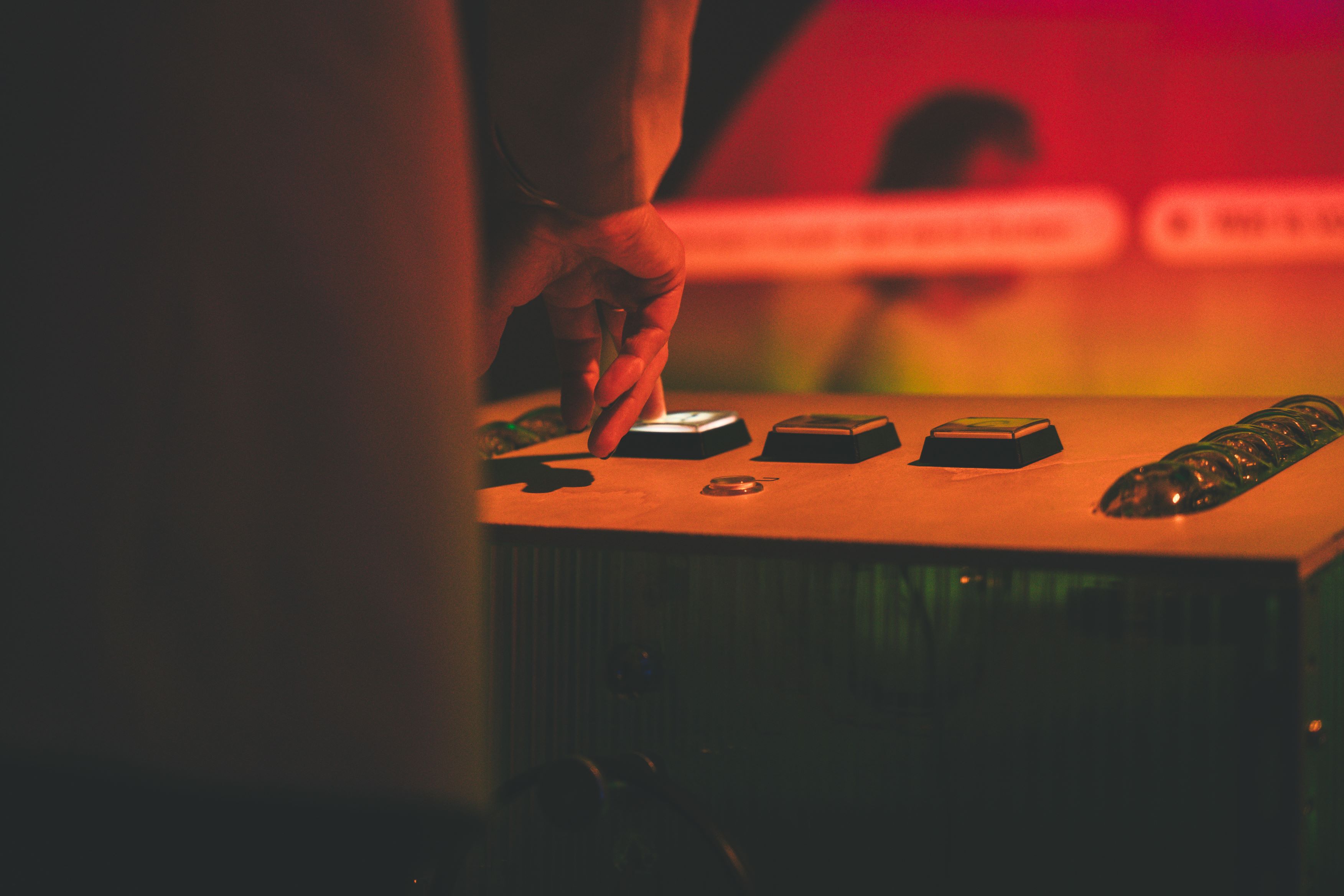
Dream.Discover.Design. Installations
Student Storytellers
Throughout the week the designers were on hand to explain their ideas and discuss the questions their installations raised - something that many visitors were enthusiastic about. One man commented: “To be a designer you also need to be able to tell your story. The TU Delft students know how to do this.”
Leaving the Discover zone, visitors exited the exhibition space, passing by a series of information boards highlighting the links between the installations and design research and education at TU Delft | Industrial Design Engineering.
Then upon ascending the stairs, up and out of the basement, visitors were tasked with making one final decision. They had to decide how they would design their future. From buying more sustainable products to putting their prejudices aside when interacting with others – visitors took the task seriously. Reading each prompt carefully, they weighed their options carefully. Once satisfied with their choice, guests ambled out onto the Ketelhuisplein – letting their eyes adjust to the sudden influx of light and their minds to the different perspectives and ideas they had just experienced.

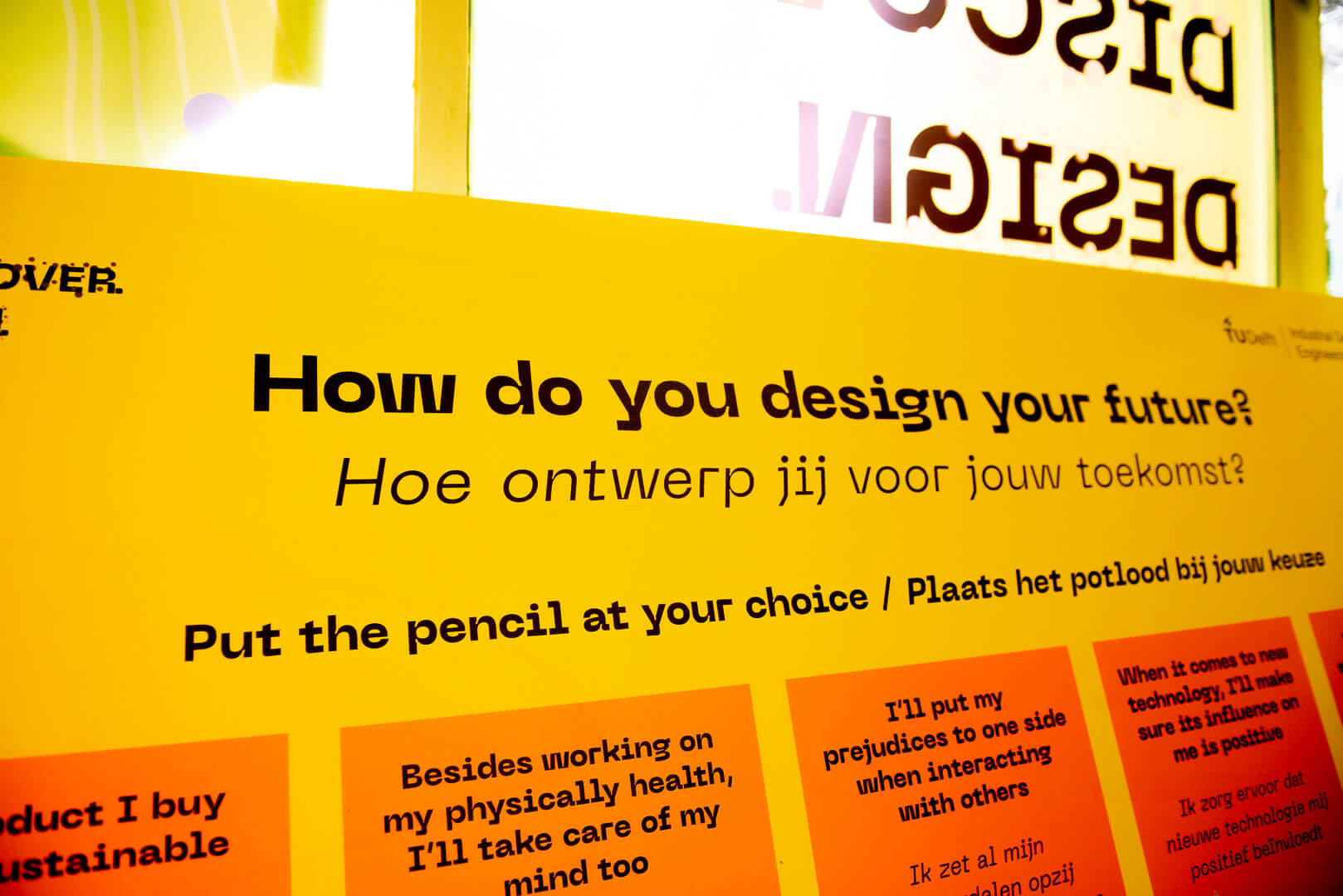
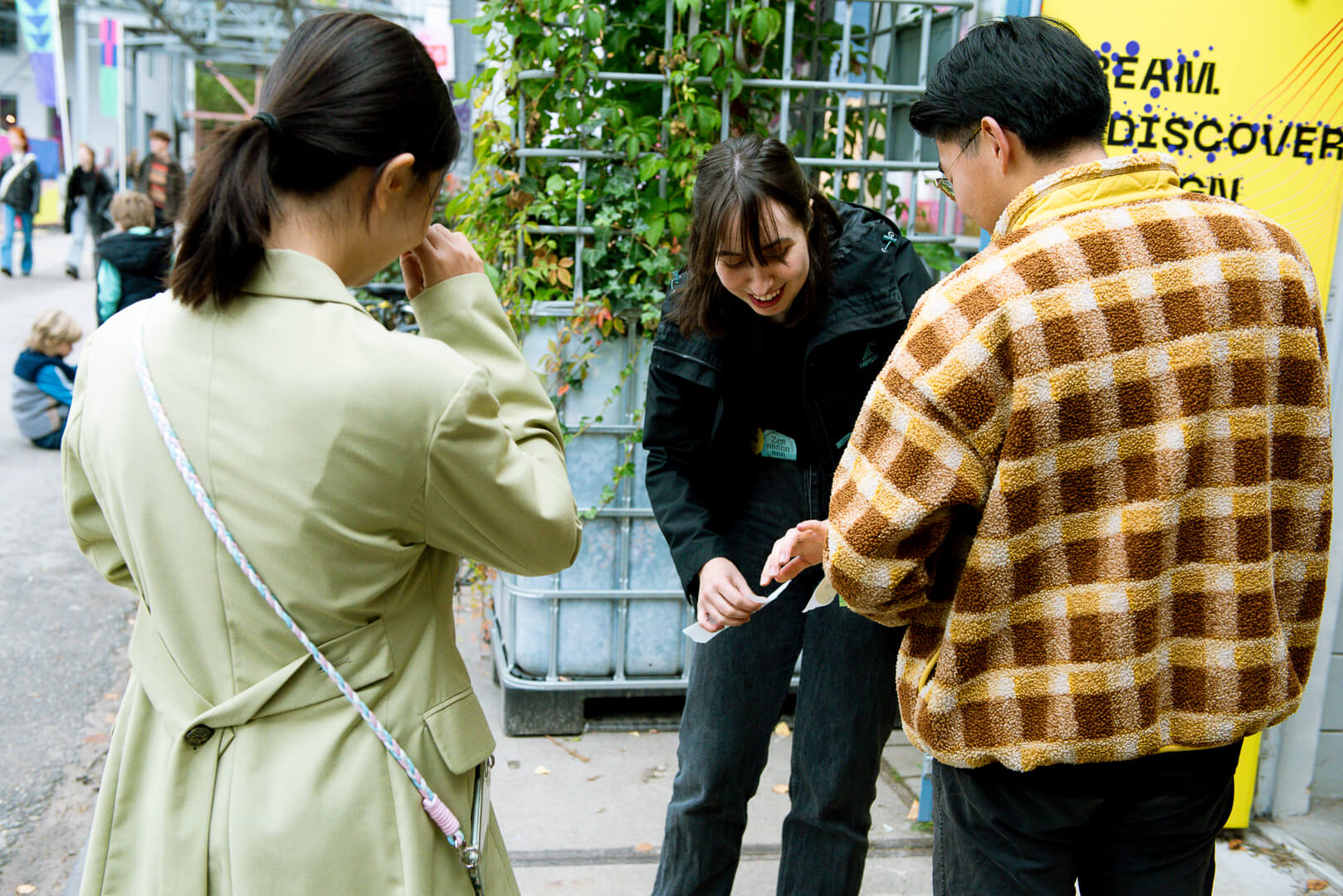
Special Visitors
In addition to all of the individual visitors who stopped by the exhibition, the Dream.Discover.Design. team also had the privilege of giving tours to various groups and special guests.
We welcomed groups from organisations like Rabobank, Vattenfall, and Gispen; curious high school students; Stichting de Nieuwe Kans; and medical students from Leiden University. TU Delft’s Rector Magnificus, Tim van der Hagen, also received an exclusive tour… And if you ask us, the “I love Design” sticker he wore throughout it says it all.
Queen Maxima even made a special appearance at Dutch Design Week. And while she wasn’t able to come Dream.Discover.Design., she did go to the Goed Industrieel Ontwerpen expo in the Klokgebouw, where she saw the work of IDE alumni Emma Linders.

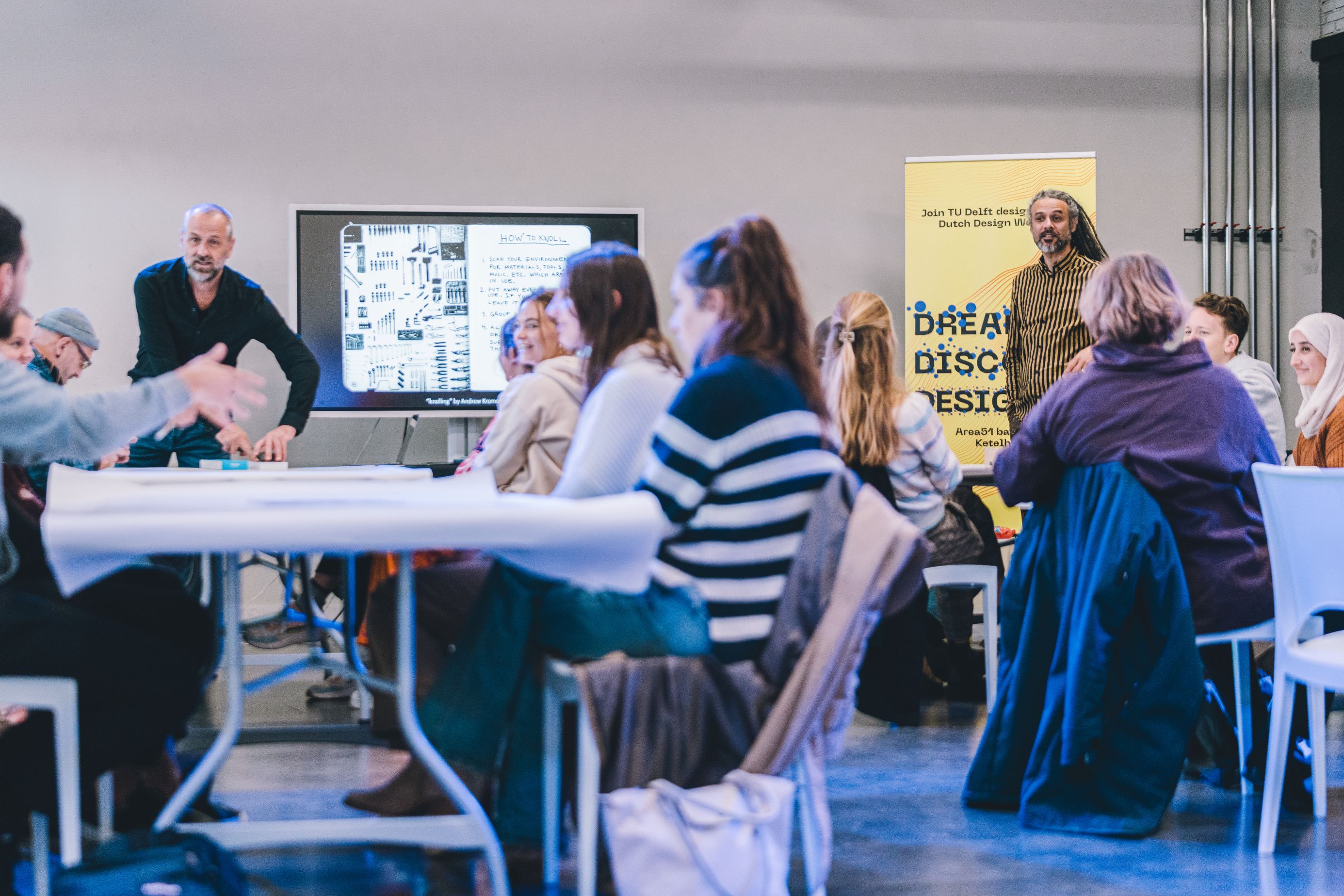

Never a dull moment
As if this wasn’t enough, different members of the faculty used the occasion of Dutch Design Week to host special events, reflecting the faculty’s research themes of health, mobility, sustainability and AI and targeting a variety of audiences:
Emotion Typology Stickers
With two of the eight installations focussing on mental health, the Dream.Discover.Design. embraced this topic by handing out specially designed emotion stickers in the opening weekend – a nod towards the Emotion Typology, developed by IDE’s Pieter Desmet and others.
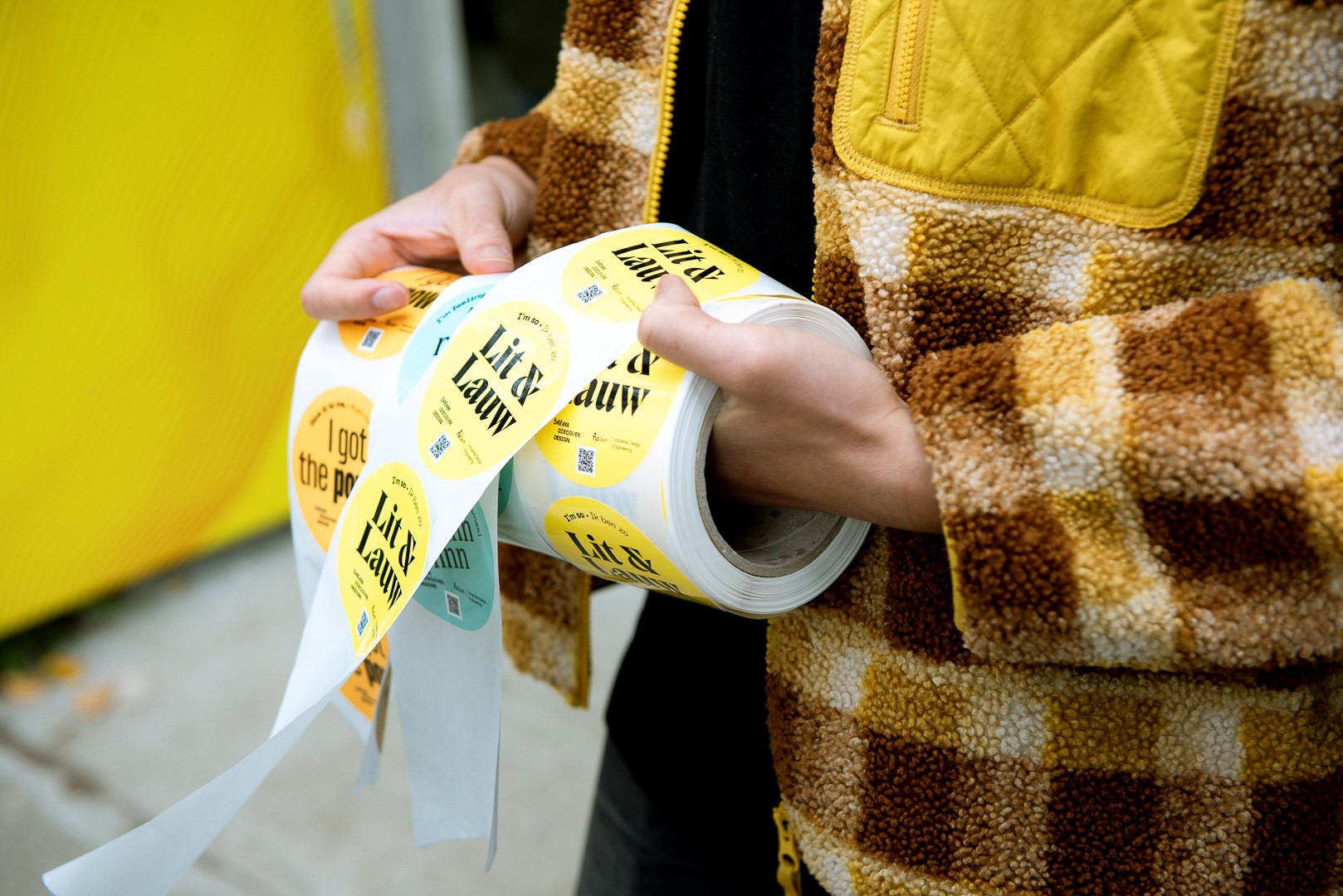

Mobility|Society Book Launch
The Mobility|Society book launch took place on Monday 23 October. The event saw a packed house, welcoming experts and enthusiasts from a diverse range of disciplines and backgrounds. Together with IDE dean, Caspar Chorus, the book’s editors – Matthijs van Dijk and Lowie Vermeersch – spoke of the motivation for the book. The publisher, Lars Muller, reflected on the creative process before the book was set in (literal) motion. Find out more about the book here.
Crash Course in Design for Repairability
The following day, Tuesday 24 October, medical students from Leiden University participated in workshop led by IDE lecturers Bas Flipsen and Stefan Persaud. The duo led the students a hands-on design workshop, in which they explained why disassembly is such an important step in understanding how to make items more sustainable and repairable. Following this, students were able to gain first-hand experience in dissembling. To find out more about the topic of repairability, be sure to read this interview with Bas Flipsen.
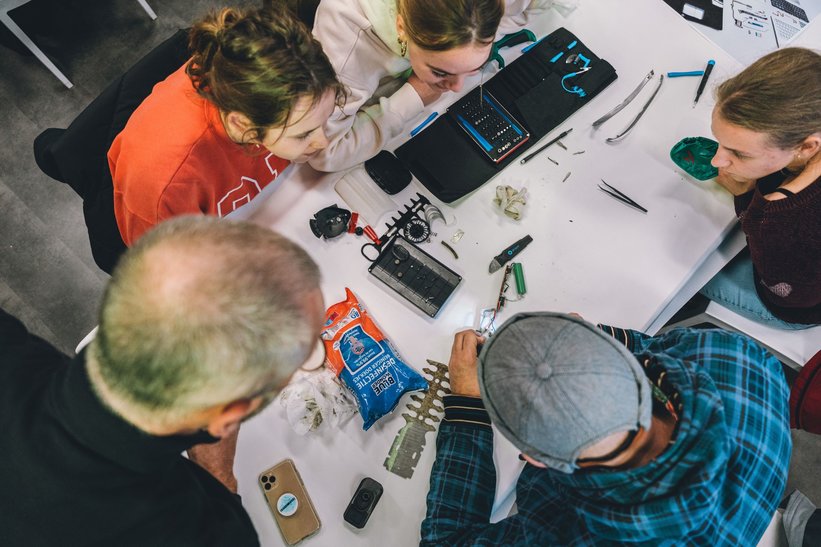

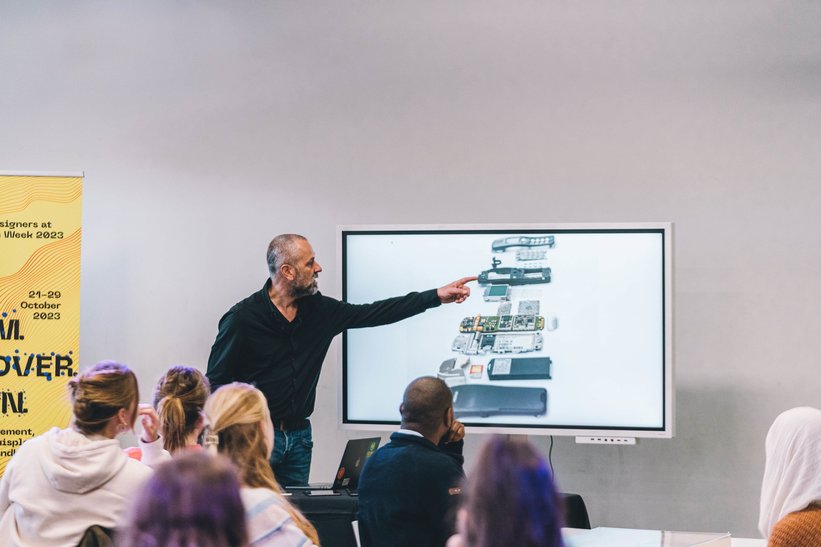

Workshops on Design Thinking & Design & AI, Alumni Q&A
On Wednesday 25 October teenagers from the Parmant Scholen in Eindhoven were treated to a design engineering taster programme. After an introduction to TU Delft and the faculty, IDE Communication's Barbara Groen and IDE student, Robin Smits, led the high school students in workshop on Design Thinking. Alessandro Bozzon and Carlo van der Valk then let the students explore the possibilities of emerging technology with a specially developed AI workshop. Finally, three young IDE alumni joined the teenagers for a Q&A session with Wing Yan Man. Microsoft's Josephine Scholtes, Delft Open Hardware's Jerry de Vos and Breeze's Marscha Goei answered questions about their own careers. What led them into studying design at IDE? How do they use design in the jobs they do today? What does their work entail?
Talking Design with Caspar Chrous and IDE Alumni
IDE alumni joined Caspar Chorus, Wing Yan Man, Ianus Keller, Caroline Kroon, Alessandro Bozzon and Maaike Kleinsmann for a drink and a conversation on IDE from the perspectives of research, education and innovation and impact.
Resilient Designers
To wrap up the week, assistant professor Rebecca Price and associate professor and Mieke van der Bijl Brouwer took the stage for “The Resilient Designers Event” on Friday 27 October. The event was designed to equip designers addressing sustainability challenges with the tools to bolster their resilience and amplify their impact. To find out more about the event, read Rebecca's summary on LinkedIn.
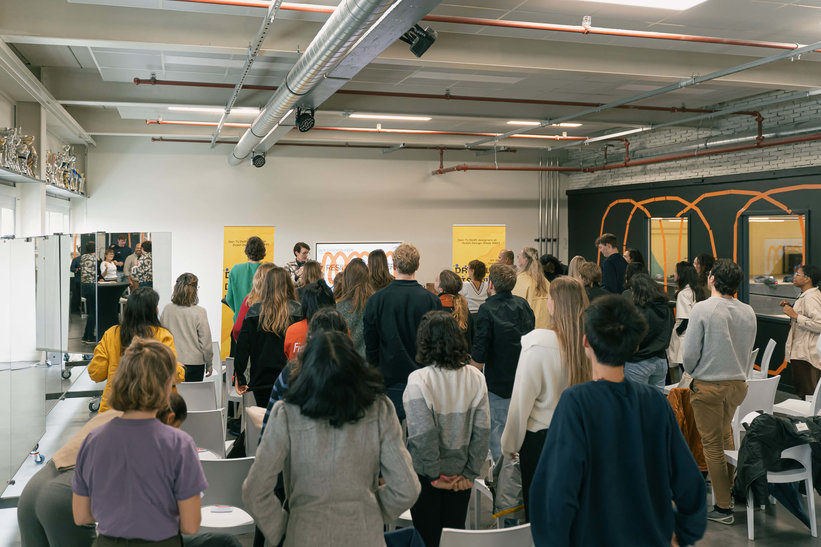
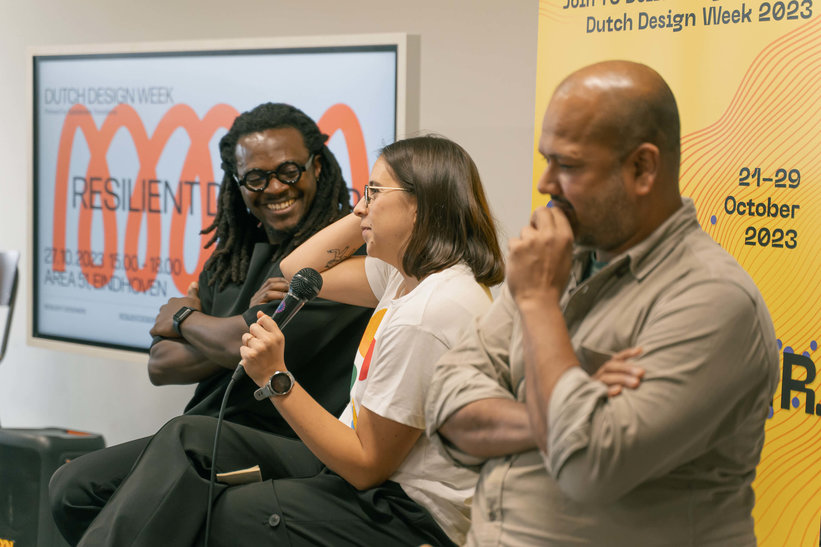
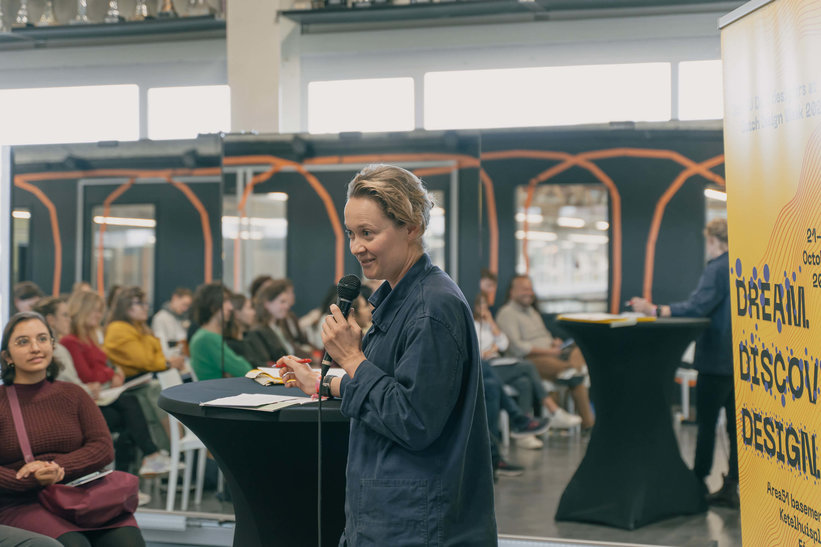

Beyond the world of Dream.Discover.Design.
In addition to our first event standalone exhibition at Dutch Design Week, IDE staff and students were busy throughout the city of Eindhoven showing off their work. From the 4TU.Design United’s Expo and Dialogues series to the DRIVE Festival’s week-long programme to the Embassy of Sustainable Design by Van Berlo – our designers showed up to impress and inspire.
For an overview of all the IDE-related projects that took place at DDW, click here.
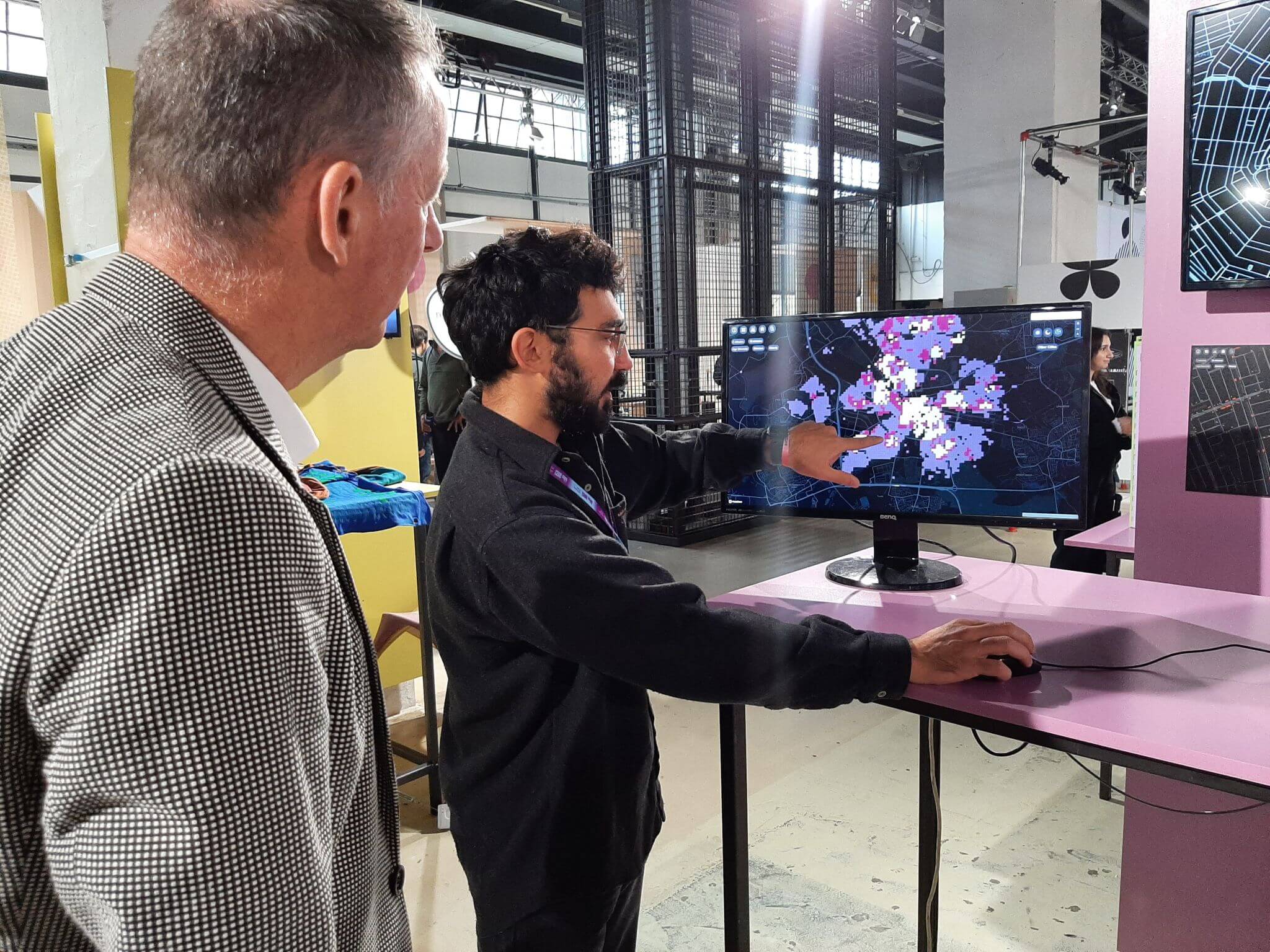
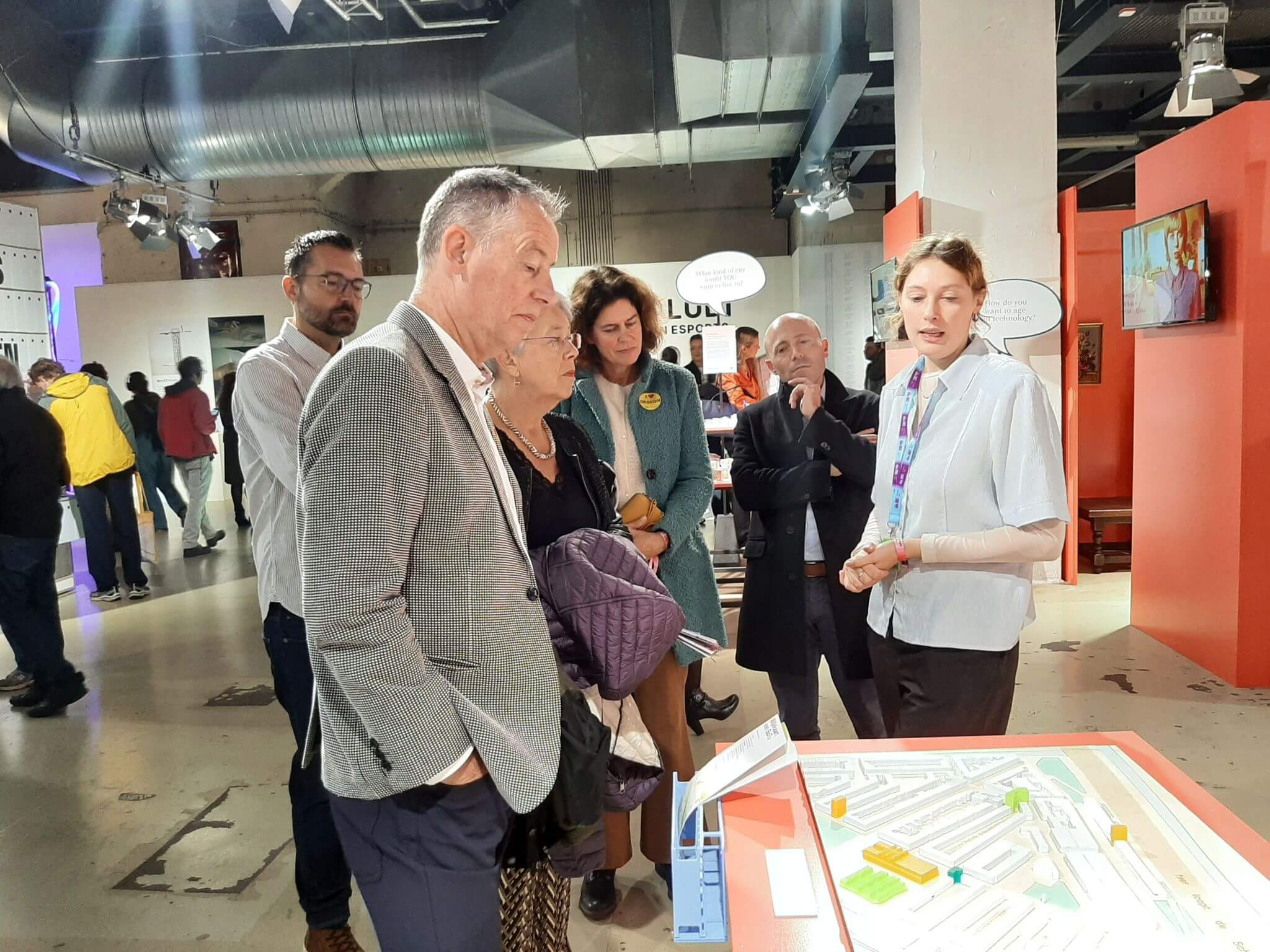

A special thanks goes out to...
Our dream of hosting TU Delft’s first solo exhibition at Dutch Design Week would not have been possible without the following people and organisations:
- Wing Yan Man: The driving force behind Dream.Discover.Design. Without her vision, ambition and enthusiasm, the exhibition would not have been possible.
- IDE students: Whether they were creating the instillations, interacting with guests, or ensuring that everything was running behind the scenes, our students did not disappoint. They made sure everything ran smoothly, from beginning to end.
- IDE researchers and educators: who supported the students in turning the ideas they submitted in the design contest into working prototypes and the final installations.




